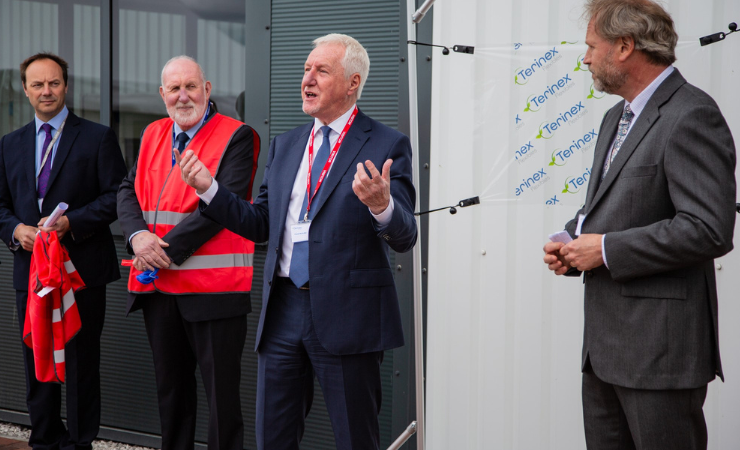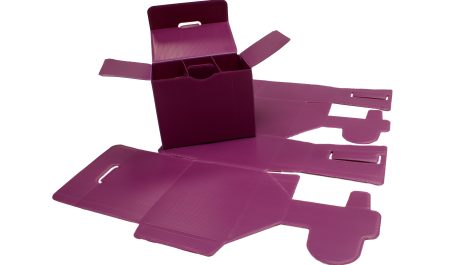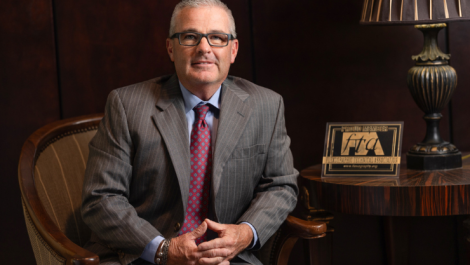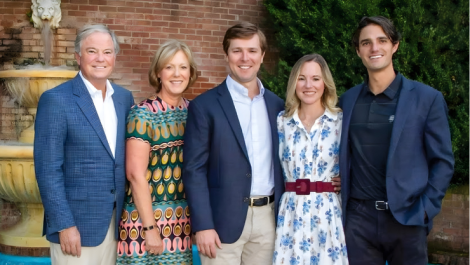Terinex Flexibles, an independent flexible packaging company, has opened a new sustainable EPC A+ rated 46,000sqft factory building near Derby, UK.
The factory, located on a new three-acre site on Dove Valley Park, is believed to be the UK’s first net zero CO2 rated building to host a flexographic printing facility, said Terinex Flexibles. The building was opened officially by Frank McArdle, retired chief executive of South Derbyshire District Council. Other local representatives were also in attendance at the opening such as Dr Justin Ives, South Derbyshire District Council’s chief executive.
Parent company, OGM Holdings Group, has invested over £10m in the new facility which is more than double the size of the original Terinex Flexibles factory that was located in Ripley. As part of OGM’s focus on creating more sustainable manufacturing sites, the Terinex Flexibles facility has been built and equipped using the latest materials, machinery, technology and processes. This has resulted in low overall energy consumption and CO2 emissions, generating its own energy from renewable sources.
Installed into the new factory a regenerative thermal oxidiser (RTO). This, explained the company, recovers energy from the by-products of the printing process for reuse. Depending on the amount of printing that is done at any one time, it is expected that between 45 – 230 kW of energy will be generated, said Terinex Flexibles. This energy is captured and stored as hot water in two 10,000 litre buffer vessels. This then heats large volumes of air that is used dry the ink in the printing process, as well as being reused for heating, rather than drawing gas from the mains.
Further areas adding to the building’s sustainability rating include its solar PV panel array, generating 215 kWp to operate the factory, with an additional 54kW power coming from the immersion heaters in the buffer vessels. The company added that all the offices are serviced with Mechanical Ventilation and Heat Recovery (MVHR), providing a minimum of 75% energy efficient ventilation to sealed rooms. Also, the lighting power consumption is well below industry benchmarks, claimed Terinex Flexibles. A night set-back system has also been included to minimise overnight heating consumption and electric charging points are on site for staff and visitor cars.
Paul Wightman, group managing director of the OGM Holdings Group is proud of the new building and its energy efficiency. Looking to ahead, he said, the company will invest in efficient plant equipment and other energy saving devices. Acting upon this, variable speed inverter drives have been added on all pumps and fan motors to further reduce consumption, he added.
Mr Wightman concluded, ‘We believe achieving demonstrable 30% reductions in the carbon footprint of our Group factories by 2025 is now mandatory. We are also doing everything we can to offer our customers more sustainable flexible film options. These include compostable, recyclable and PCR (post-consumer 30% to 90% recycled content) materials, compostable inks, recyclable papers and reusable pallets. In terms of emissions management, we take this very seriously and as a result of investment in the latest technology for cleaning our exhaust gases, our solvent mass emissions to atmosphere will be below 20mg/Nm3, which is the most stringent target for VOCs emissions.’






